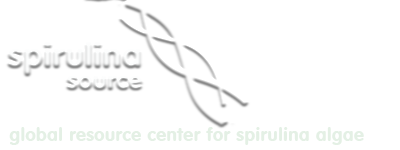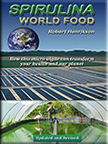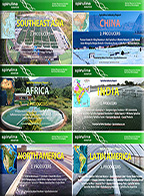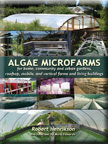REFERENCES AND ABSTRACTS BY HEALTH CATEGORY
Spirulina scientific reference library. Over 100 references covering 45 years of international research.
Click on PDF Download button for free pdf file.
![]() Evaluation of Microalgae Antiviral Activity and Their Bioactive Compounds. by Dora Allegra Carbone et al.Pub. in Antibiotics 2021, 10, 746. https://doi.org/10.3390/antibiotics10060746. 2021. Italy.
Evaluation of Microalgae Antiviral Activity and Their Bioactive Compounds. by Dora Allegra Carbone et al.Pub. in Antibiotics 2021, 10, 746. https://doi.org/10.3390/antibiotics10060746. 2021. Italy.
Photosynthetic organisms such as microalgae are known to be a reservoir of bioactive secondary metabolites; this feature, coupled with the possibility of achieving very high biomass levels without excessive energetic expenses, make microalgae worthy of attention in the search for new molecules with antiviral effects. In this work, the antiviral effects of microalgae against some common human or animal viruses were considered, focusing our attention on some possible effects against SARS-CoV-2. We summed up the data from the literature on microalgae antiviral compounds, from the most common ones, such as lectins, polysaccharides and photosynthetic pigments, to the less known ones, such as unidentified proteins. We have discussed the effects of a microalgae-based genetic engineering approach against some viral diseases. We have illustrated the potential antiviral benefits of a diet enriched in microalgae.
![]() Could microalgae-derived antiviral compounds combat SARS CoV-2 and other viruses? by Liji Thomas, MD. 2021. India.
Could microalgae-derived antiviral compounds combat SARS CoV-2 and other viruses? by Liji Thomas, MD. 2021. India.
Microalgae produce a variety of chemicals, such as carbohydrate-binding proteins, called lectins; polysaccharides with sulfate groups and acidic polysaccharides; pigments; peptides and proteins; flavonoids and polyphenols; and glycolipids. Polysaccharides are produced by the well-known Spirulina and Porphyridium microalgae. Sulfate polysaccharides may occupy the viral attachment sites on the viral envelope. Other promising sulfate-polysaccharides from Spirulina include the calcium-spirulan (Ca-SP), which is active against HIV1 and HSV. Microalgal supplements could be used in the diet to counteract SARS-CoV-2 infection. Spirulina activates the immune system by virtue of its Braun-type lipoproteins that trigger Toll-like receptors. A spirulina-rich diet may help fight HIV infection, which may be linked to the lower incidence of HIV infection.
Conclusion: microalgae display eco-friendly and eco-sustainable characteristics, produce a high variety of antiviral compounds, and can be used as a supplement in diets without collateral effects. Moreover, these organisms are considered very good candidates for the genetic engineering approach.
In the light of the current paucity of therapeutic options for acute coronavirus 2019 (COVID-19), it is timely to consider broadening biopharmaceutical development options to include natural products. Extracts of Spirulina, a widely consumed blue-green cyanobacterium, demonstrate antiviral, immunomodulatory and anti-inflammatory properties in preclinical studies. These properties are attributable to the Spirulina phycobiliprotein-phycocyanin complex. Available preclinical data supports the potential application of phycocyanin-rich Spirulina extracts as disease modifying therapeutics in COVID-19, especially for lung injury and cytokine release syndrome.
![]() Spirulina Potential Implications for Covid-19 Related Cytokine Storm Therapy. by Azaf Tzachor et al. pub in Marine Biotechnology (2021) 23:149–155 https://doi.org/10.1007/s10126-021-10020-z. Feb 2021. Israel.
Spirulina Potential Implications for Covid-19 Related Cytokine Storm Therapy. by Azaf Tzachor et al. pub in Marine Biotechnology (2021) 23:149–155 https://doi.org/10.1007/s10126-021-10020-z. Feb 2021. Israel.
An array of infections, including the novel coronavirus (SARS-CoV-2), trigger macrophage activation syndrome (MAS) and subsequently hypercytokinemia, commonly referred to as a cytokine storm (CS). It is postulated that CS is mainly responsible for critical COVID-19 cases, including acute respiratory distress syndrome (ARDS). Recognizing the therapeutic potential of Spirulina blue-green algae (Arthrospira platensis), in this in vitro stimulation study, LPS-activated macrophages and monocytes were treated with aqueous extracts of Spirulina, cultivated in either natural or controlled light conditions. We report that an extract of photosynthetically controlled Spirulina (LED Spirulina), at a concentration of 0.1 µg/mL, decreases macrophage and monocyte-induced TNF-α secretion levels by over 70% and 40%, respectively. We propose prompt in vivo studies in animal models and human subjects to determine the putative effectiveness of a natural, algae-based treatment for viral CS and ARDS, and explore the potential of a novel anti-TNF-α therapy.
![]() Spirulina Extract Enhances T-Cell Responses Targeting Spike Protein of Severe Acute Respiratory Syndrome Coronavirus 2 (SARS-CoV-2): A Potential Drug Candidate for Treatment of COVID 19.
Spirulina Extract Enhances T-Cell Responses Targeting Spike Protein of Severe Acute Respiratory Syndrome Coronavirus 2 (SARS-CoV-2): A Potential Drug Candidate for Treatment of COVID 19.
by P. Peter Beside Arts College, Proddatur, India-516360 Pub. in American-Eurasian Journal of Toxicological Sciences 12 (1): 08-13, 2020. India.
Globally, Severe Acute Respiratory Syndrome Coronavirus 2 (SARS CoV-2) killed more than 323k people and trimmed the economic growth significantly. Vaccine development is not soon and people may require living with the SARS-CoV-2 virus. T helper cells target the spike protein of SARS-CoV-2. And a strong T cell response is directly proportional to the rate of SARS-CoV-2 suppression. Spirulina augmented interferon-gamma (IFN ) & Natural Killer (NK) cell cytotoxicity in humans. Spirulina was effective in inhibiting several viral replications like HIV-1 and potentially induced IFN in healthy volunteers. Immunity is the ultimate protective shield combating with various infectious diseases including COVID-19. A nutrient supplement Spirulina being an effective immunomodulator showed promising results in proliferating cell-mediated immunity and activation of T-cells. Spirulina extract degrades histone deacetylases responsible for the inflammatory gene expression. Spirulina is associated with a wide range of adverse events and in few people it may be fatal. So, people with allergies, autoimmune disorders and other underlying medical conditions should consult healthcare professional before consuming. Pure Spirulina extract is safe (not regulated by the US FDA) and a potential drug candidate in combating with the SARS CoV-2. This review recommends well-controlled, randomized clinical trials to confirm the effectiveness of Spirulina in inhibition and proliferation of the novel virus in the human body.
![]() The Effect of Arthrospira platensis Capsules on CD4 T-Cells and Antioxidative Capacity in a Randomized Pilot Study of Adult Women Infected with Human Immunodeficiency Virus Not under HAART in Yaoundé, Cameroon. by Frank Stephane Winter et al. Pub. in JNutrients 2014, 6, 2973-2986; Cameroon.
The Effect of Arthrospira platensis Capsules on CD4 T-Cells and Antioxidative Capacity in a Randomized Pilot Study of Adult Women Infected with Human Immunodeficiency Virus Not under HAART in Yaoundé, Cameroon. by Frank Stephane Winter et al. Pub. in JNutrients 2014, 6, 2973-2986; Cameroon.
Dietary supplements are often used to improve the nutritional status of people living with HIV/AIDS (PLHIV). Arthrospira platensis (Asp), also known as Spirulina, is a cyanobacterium rich in proteins and micronutrients. Cell and animal trials described immune-modulating, antiretroviral and antioxidant activities. This pilot study describes the effects of the supplementation of 5 g/day of Asp on a pre-highly-active antiretroviral therapy (pre-HAART), HIV-infected, adult female population. It was conducted as a three-month randomized controlled trial (RCT) that compared a cup supplementation of five grams/day of Asp with a placebo of equal protein content and energy. The study included 73 HIV-infected women. The immediate outcome variables were CD4 T-cells, viral load and immune activation by CD8 T-cells expressing CD38. The antioxidant status was assessed by way of the total antioxidant capacity of the serum (TAOS). The renal function was documented by way of creatinine, urea and the calculated glomerular filtration rate. Statistical analyses were carried out with non-parametric tests, and the effect size of each interaction was calculated. No differences in the immunological and virological markers between the Asp and the placebo group could be observed. In the placebo group, 21 of 30 patients (70%) developed concomitant events, while in the Asp group, only 12 of 28 patients (43%) did. Both groups registered a significant weight increase; 0.5 kg (p < 0.05) in the Asp group and 0.65 kg (p < 0.05) in the placebo group. The antioxidant capacity increase of 56 (1–98) µM for Asp was significantly different from the decrease observed in the placebo group (p < 0.001). A slight increase in the creatinine level of 0.1 g/dL (p < 0.001) was observed in the Asp group, and no effect was observed in the urea levels. The improvement of the antioxidant capacity under Asp, shown for the first time on PLHIV, could become a focus for future research on the nutritional and health effects of Spirulina. The observed slight, but significant increase of serum creatinine needs further evaluation, especially with varying doses of Asp.
![]() Antiviral Properties of Cyanobacterium, Spirulina Platensis- a review.
Antiviral Properties of Cyanobacterium, Spirulina Platensis- a review.
by Ranjani Ramakrishnan, Sri Venkateswara University, Andhra Pradesh, India. Pub. in International Journal of Medicine and Pharmaceutical Sciences 2321-0095 Vol. 3, Issue 5, Dec 2013, 1-10. India.
Viral diseases are observed in all living organisms including plant, animal and human. Carcinogenic viruses and other disease causative viruses including Chickengunya virus Dengue virus, SARS-CoV, HIV, Swine flu, Influenza virus, Herpes simplex virus, Human papilloma virus, oncorna viruses such as HTLV I and HTLV II are most important viruses spread disease worldwide. Some viruses are emerging, infectious, contagious. Prevention of virus transmission is important and is possible some extent by taking some important measures like creating awareness on transmission and pathology. Viruses are spread widely by many factors like environmental factors, contaminated, water, food, infected vector, person to person and to animals. Resistance to the drug by host and virus is becoming one of the major problem in treatment with chemical drugs. To overcome this, one of the alternative ways is identifying biological compounds in the development of antiviral drugs and they are natural products especially from plants and algae. There is a need to focus on antiviral activities of natural products identified from plants to provide safe, lowest and effective drugs to control viral diseases of human. In the present study reviewed some of the important studies on the antiviral activities of microalgae Spirulina platensis.
Inhibition of HIV-1 replication by an aqueous extract of Spirulina platensis (Arthrospira platensis).
by Seyoum Ayehunie(1), Amha Belay (2), Timothy Baba(1,3) and Ruth Ruprecht(1).
Laboratory of Viral Pathogenesis, Dana-Farber Cancer Institute and Harvard Medical School, Boston, MA, USA; (2) Earthrise Farms, Calipatria, CA; (3) Division of Newborn Medicine, Department of Pediatrics, Tufts University, Boston, MA, USA. Pub. in Journal of Acquired Immune Deficiency Syndromes and Human Retrovirology, 18:7-12. USA 1998.
An aqueous extract of the blue-green filamentous algae Arthrospira platensis (previously called Spirulina platensis) inhibited HIV-1 replication in human T-cell lines, peripheral blood mononuclear cells (PBMC) and Langerhans cells (LC). Extract concentrations ranging between 0.3 and 1.2 mcg/ml reduced viral production by approximately 50% (50% effective concentration [EC50] in PBMCs). The 50% inhibitory concentration (IC50) of extract for PBMC growth ranged between 0.8 and 3.1 mg/ml. Depending on the cell type used, therapeutic indices ranged between 200 and 6000. The extract inactivated HIV-1 infectivity directly when preincubated with virus before addition to human T-cell lines. Fractionation of the extract revealed antiviral activity in the polysaccharide fraction and also in a fraction depleted of polysaccharides and tannins. We conclude that aqueous A platensis extracts contain antiretroviral activity that may be of potential clinical interest.
Key Words: Arthrospira platensis extract – HIV-1 replication inhibition – Primary cells.
Calcium Spirulan, an inhibitor of enveloped virus replication, from a blue-green alga Spirulina.
by Hayashi et al. 1996. Pub. in Journal of Natural Products, 59, 83-87. Japan.
Bioactivity-directed fractionation of a hot H2O extract from a blue-green-alga Spirulina platensis led to the isolation of a novel sulfated polysaccharide named Calcium Spirulan (Ca-SP) as an antiviral principle. This polysaccharide was composed of rhamnose, ribose, mannose, fructose, galactose, xylose, glucose, glucuronic acid, galacturonic acid, sulfate and calcium. Ca-SP was found to inhibit the replication of several enveloped viruses, including Herpes simplex virus type 1, human cytomegalovirus, measles virus, mumps virus, influenza A virus and HIV-1. It was revealed that Ca-SP selectively inhibited the penetration of virus into host cells. Retention of molecular conformation by chelation of calcium ion with sulfate groups was suggested to be indispensible to its antiviral effect.
An extract from spirulina is a selective inhibitor of herpes simplex virus Type 1 Penetration into HeLa Cells.
by Hayashi et al. 1993. Pub. in Phytotherapy Research, Vol. 7. 76-80. Japan.
The water soluble extract of spirulina achieved a dose-dependent inhibition of the replication of herpes simplex virus type 1 (HSV-1) in HeLa cells within the concentration range of 0.08-50 mg/mL. This extract proved to have no virucidal activity and did not interfere with adsorption to host cells. However, the extract affected viral penetration in a dose-dependent manner. At 1 mg/ml the extract was found to inhibit virus-specific protein synthesis without suppressing host cell protein synthesis if added to the cells 3 hours before hamsters at doses of 100 and 500 mg/kg per day.
Antiviral activity of blue-green algae cultures.
by Patterson. 1993. Pub. in Journal of Phycology 29, 125-130. USA.
Lipophilic and hydrophilic extracts from approximately 600 strains of cultured cyanophytes, representing some 300 species, were examined for antiviral activity against three pathogenic viruses. Approximately 10% of the cultures produced substances that caused significant reduction in cytopathic effect normally associated with viral infection. The screening program identified Chroocococcales as commonly producing antiviral agents. Key index words: antiviral, cyanobacteria, cyanophyte, herpes virus, HIV-1, HIV-2, human immunodeficiency virus, natural products, pharmaceutical, respiratory syncytical virus.
AIDS Antiviral sulfolipids from cyanobacteria (blue-green algae).
by K. Gustafson, et al. August 16, 1989. Pub. in Journal of the National Cancer Institute, 81(16) pg. 1254. USA.
Sulfoglycolipids from blue-green algae exhibit strong antiviral properties. Helper T-cells exposed to blue-green algae-sulfoglycolipids were protected from HIV-1 infection in in vitro studies.




